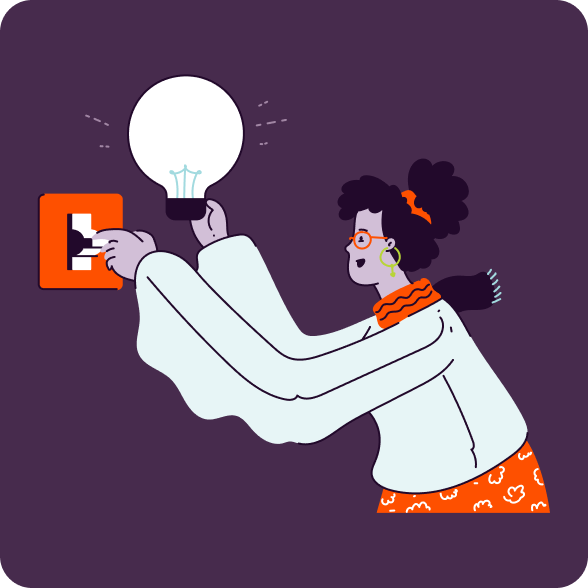A seller in 2021 starts their day at a desk, most likely in their home office. They’ve been working remotely for a year-and-a-half, if not longer. In this new normal, buyer engagement consists of social selling, Zoom calls, and remote presentations.
A buyer in 2021 starts their day at a desk, most likely in their home office. They’ve also been working remotely for the past 18 months. A buyer journey that previously started at an industry conference now begins on LinkedIn and consists of review site searches and case studies.
The sales process has changed significantly for buyers and sellers over the last two years. Both parties have adapted to digital-first sales motions and it’s clear that remote sales journeys are here to stay.
Digital sales processes have given buyers a newfound advantage: they’re in control of their own research into companies and products, as well as how and when they prefer to interact with sellers.
In this post, we’ll look at changes in buyer behaviour over the past 18 months and explore how sellers can adapt to these new trends.
Be knowledgeable, available, and transparent
The average buyer has 27 information-gathering interactions before they ever talk to a salesperson. By the time a buyer speaks with your sales rep, they already have a fundamental understanding of your business and its products, as well as your competitors.
Buyers don’t want to be sold. Instead, they want to build a relationship with a trusted guide. In order to win business with well-informed buyers, sellers need to be available, informative, and honest:
- Available – In the LinkedIn State of Sales 2021 report, only 28% of buyers indicated that sellers remain engaged after the sale to ensure value delivery. Sellers can create value by identifying buyer’s needs early in the sales cycle and helping right-size a solution up until and after a deal is closed.
- Informative – Sellers are the subject matter experts for the buyer. Buyers have done their research, but 44% of buyers note that they prefer well-informed sellers who can become a resource that guides them through the buyer journey. 43% of buyers said that a seller who doesn’t know their own product or service would be a deal-killer.
- Honest – Buyers are navigating the sales process with several vendors, products, and pricing models, yet only 30% of buyers felt that sellers were transparent about pricing.
Selling is no longer transactional. Buyers need sellers who empathise, build relationships, and use their conversations to add value through intelligent recommendations. Sales reps need to become even more agile because they no longer work with an individual buyer. The buyer pool is also expanding.
Sales is no longer one-to-one, it’s one-to-many
Multiple stakeholders are included in the product evaluation process. As solutions increasingly touch many functions within an organisation, more members of a buying team need to validate a solution. For example, a CMO, CTO, VP of Marketing, and Content Marketing Manager may all be included in the product evaluation process for a content marketing solution.
According to Forrester’s research, 63% of purchases have more than four people involved. Each of these personas has different roles as buyers, ranging from champions or influencers to decision-makers and users.
Each of these roles has unique considerations. Sellers often address their unique needs through content. Content helps sellers advance the conversation with the buying team and ensure that their needs are met. However, the number of interactions has grown exponentially. During the pandemic, buyer interactions have grown from 17 per deal cycle to 27.
Sellers need access to the right content, at the right time, in order to make the most of each interaction. Quickly responding to the right buyer persona on the right channel helps differentiate sellers from their competitors.
And this is important because buyers are present in more places than ever before.
Buyers are engaging everywhere online
With fewer places to engage in person, buyers have turned to digital channels. And the buying journey is no longer linear. Throughout the sales cycle, buyers will loop or return to content in different channels as a way to validate and build consensus. A conversation that starts on LinkedIn may eventually transition to email, text, or even digital sales rooms.
Social media platforms have become social selling channels. More than 50% of buyers noted that they leverage social media to find content. LinkedIn, in particular, stands out for sellers with more than 70% noting that they are committed to expanding their network.
Change is good
Digital-first sales are transforming the way that sellers and buyers interact, creating opportunities for stronger long-term relationships that can eventually become upsell opportunities.
Buyers are willing to spend money on digital self-serve because it’s convenient. 70 percent of B2B decision-makers told McKinsey that they’re open to making new, fully self-serve or remote purchases in excess of $50,000, and 27 percent would spend more than $500,000.
Organisations need to empower sellers to engage buyers on their terms in this digital-first world. Seismic offers tools for sellers to engage buyers using highly intelligent insights-driven tools that connect buyers with the right resources on the right channel.
Download our eBook, Rewriting the Rules of Engagement to learn how Seismic can help your organisation win new business in the new sales landscape.
